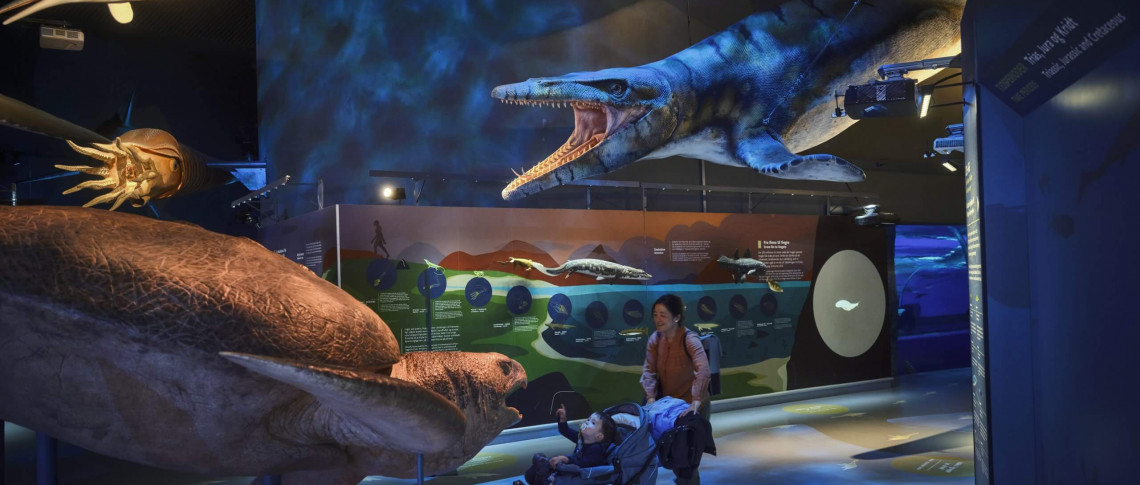The heart of the exhibit is 11 models of the most spectacular ocean creatures that ever lived. The models are true to size and represent a snippet of the most significant animals to have lived in the 550 million years of ocean history. From giant scaled squid the size of a truck to the 11-meter-long forefather of the great white shark, the megalodon.
Join us for an underwater journey through time and meet the models here.
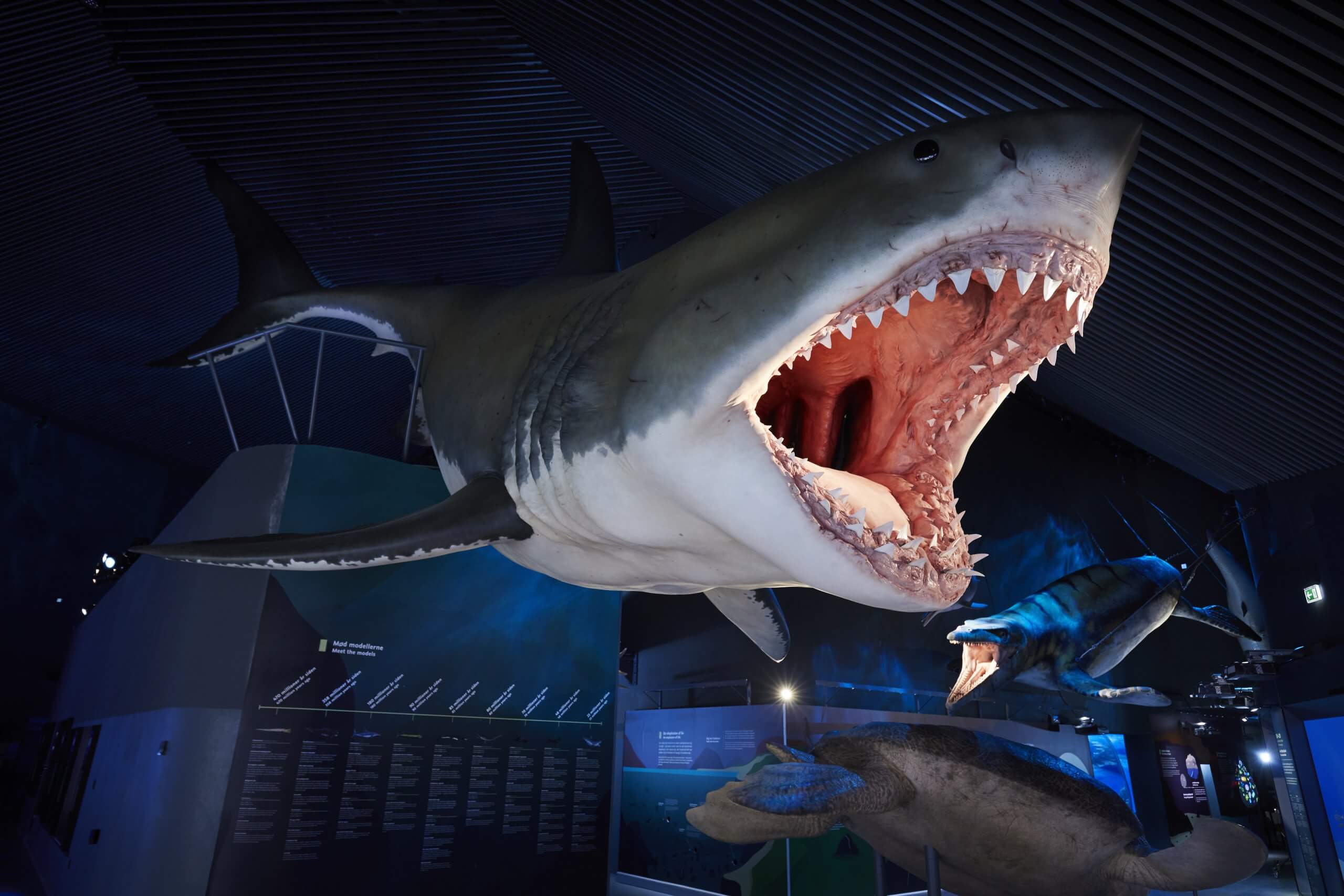
Megalodon, The Monster Shark
23 million years ago
Max length 15 m
Length of the model 11 m
The Megalodon most likely resembled a Great White shark. It’s not clear just how big they could grow, as the only remnants that have been found, are their teeth. The Megalodon replaced its teeth with new ones throughout its life, just like the sharks we know today. It is known that the Megalodon species was widespread in the earth’s oceans, as fossilized teeth have been found around the world. Using their mighty jaws, they could rip out chunks of their prey. They were so ferocious that not even the biggest animals in the oceans were safe, and whales were their preferred prey.
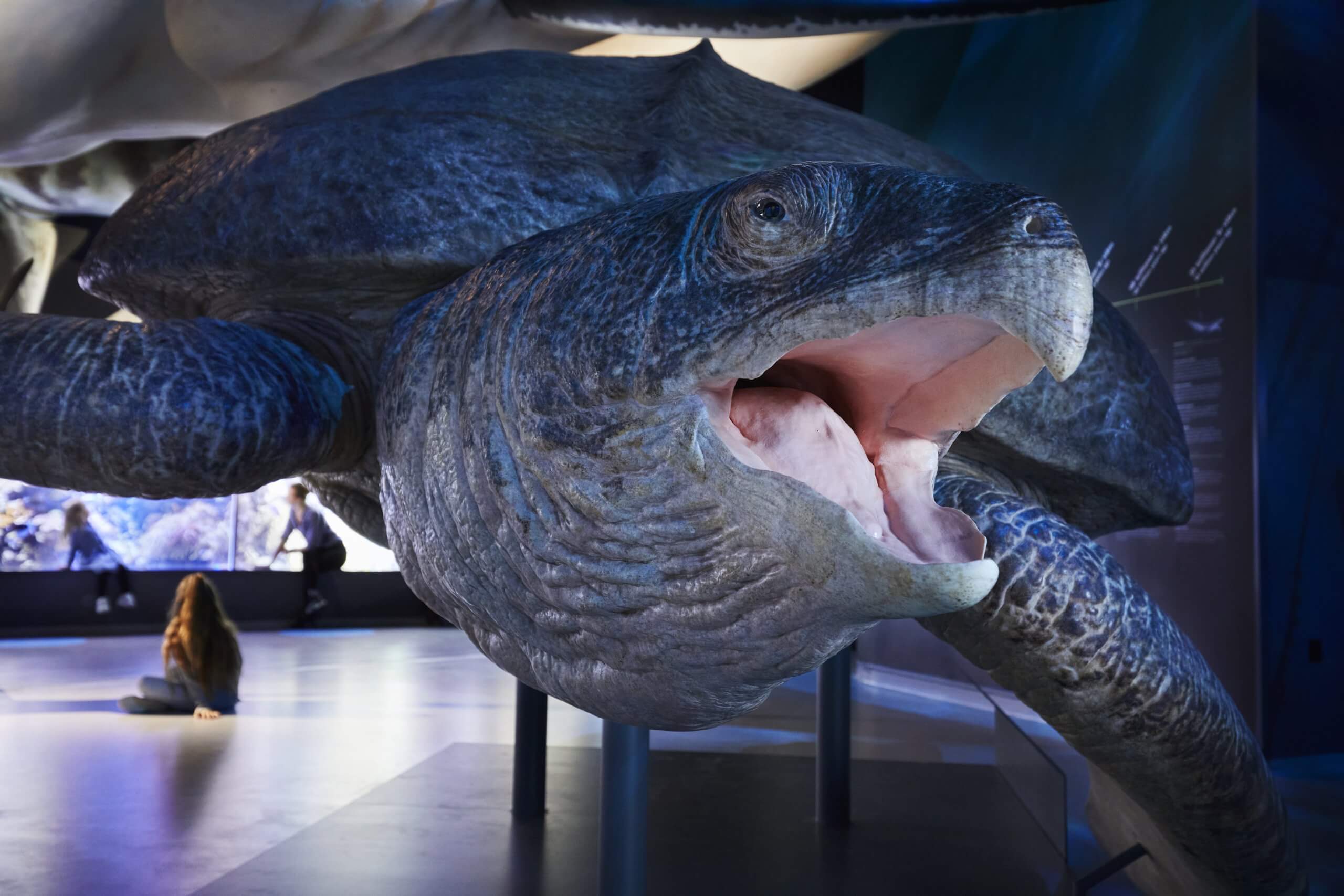
Archelon, The King Turtle
70 million years ago
Max length 4.6 m
Length of the model 4 m
Measuring up to 4.6 meters, the archelon giant sea turtle was the same size as a car. It was a slow swimmer, spending most of its life underwater, only swimming to shore to lay its eggs. Just like the sea turtles of today, the archelon would crawl unto the land to lay its egg in the sand. The newly hatched turtle babies would have to fight their way past lizards and predatory birds to reach the safety of the water.
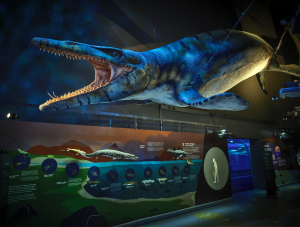
Tylosaur, The Snake Lizard
85 million years ago
Max. length 14 m
Length of model 12.5 m
The tylosaur may be the closest creature to a real-life sea monster, and even sharks would need a quick escape to avoid being on the menu. The tylosaur belongs to a group of marine reptiles known as mosasaurs, that lived around the same time as the dinosaurs roamed the earth. Even though the tylosaur resembles a mix between a shark and a crocodile, its’ modern-day relatives are actually snakes and komodo dragons. A common trait that shows this, is the forked tongue of the tylosaur.

Cameroceras, The Tower Cephalopod
470 million years ago
Max length 8 m
Length of model 7.5 m
The cameroceras were at the top of the food chain and lived off prehistoric arthropods like trilobites and sea scorpions. The colossal squid was protected by a long heavy shield, causing it to be quite slow. However, fast animals didn’t exist at the time, and most life crawled at the bottom of the ocean, easy prey for the armored giant.
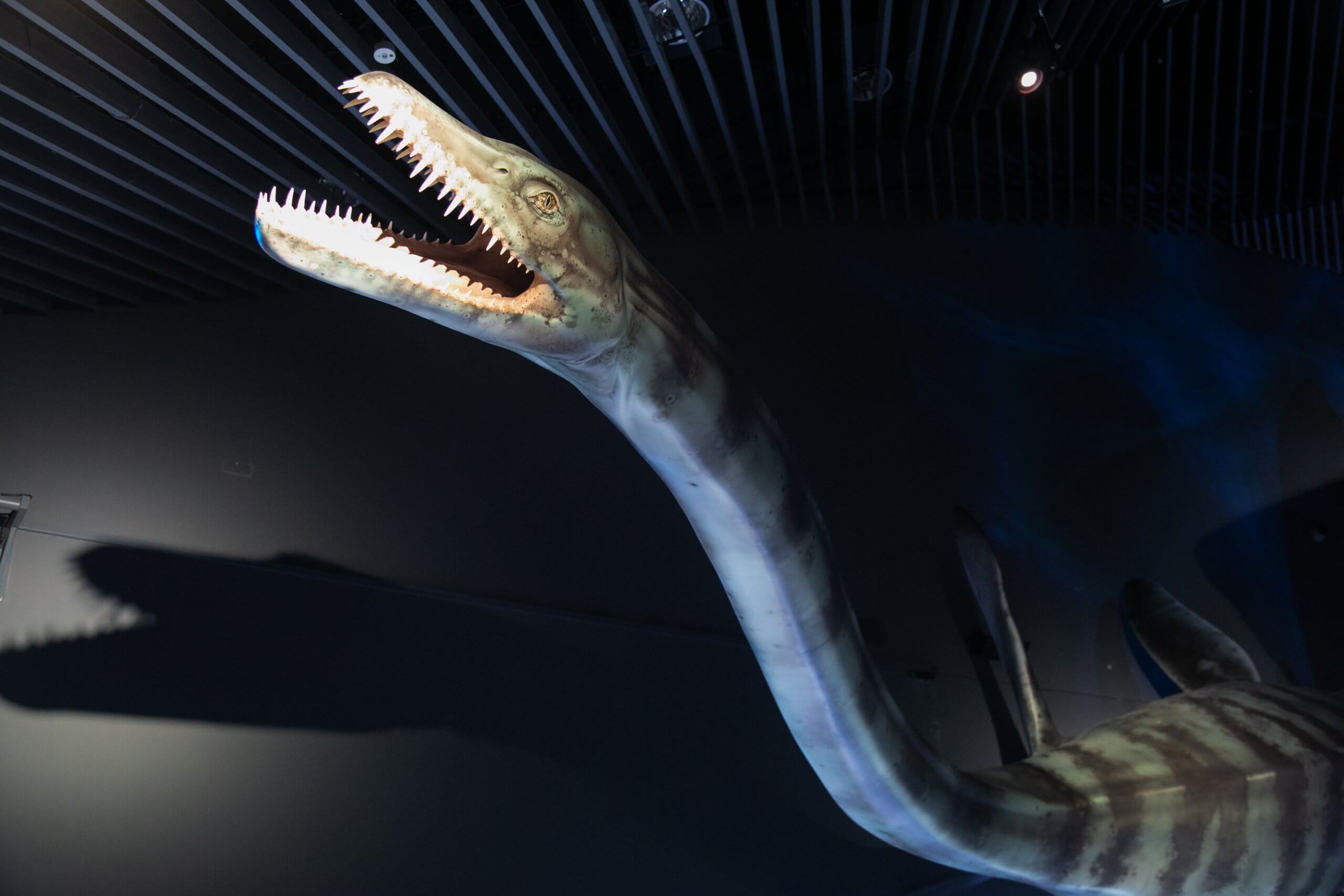
Elasmosaurus, The Swan Lizard
80 million years ago
Max length 10 m
Length of model 10 m
The elasmosaur was an ancient marine reptile of the plesiosaur family, that lived in the water at the same that as dinosaurs roamed the earth. They were well adapted to swimming, with legs shaped as four strong webbed flippers. Many fossilized bones of the elasmosaur have been found, with its characteristic long neck. It’s thought that the elosmosaur helped start the myth of the Loch Ness monster.
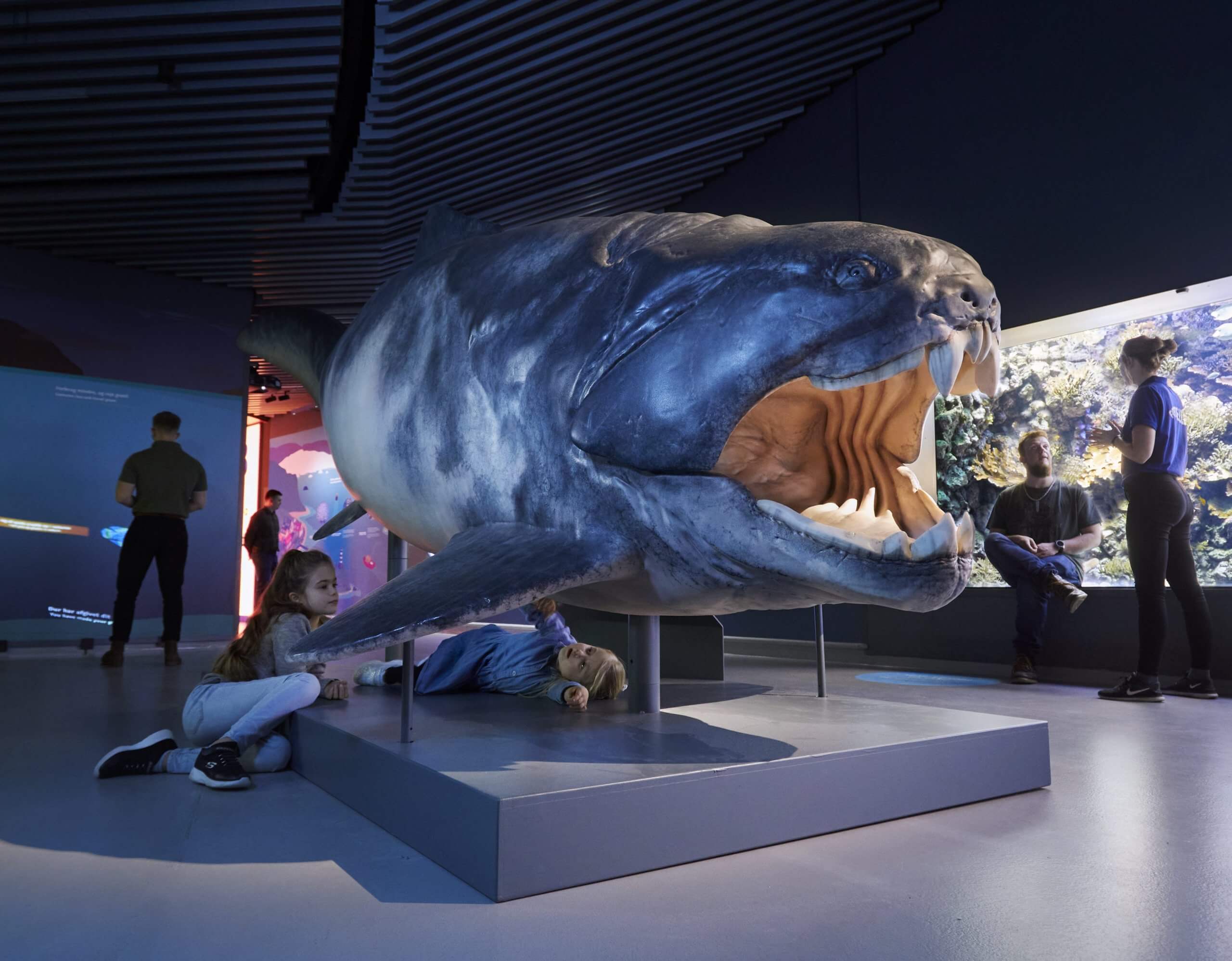
Dunkleosteus, The Armored Fish
358 million years ago
Max length 8 m
Length of model 6 m
358 million years ago, there was a fish that ruled the world’s oceans. At the very top of the food chain, was the giant dunkleosteus. At up to almost 8 meters, it was the largest fish in the world, at that time. The dunkleosteus belonged to a group of armored fish called placoderm, which are now entirely extinct. It was covered in armored plates, as thick as 5 centimeters, and even their eyes were armor-plated!
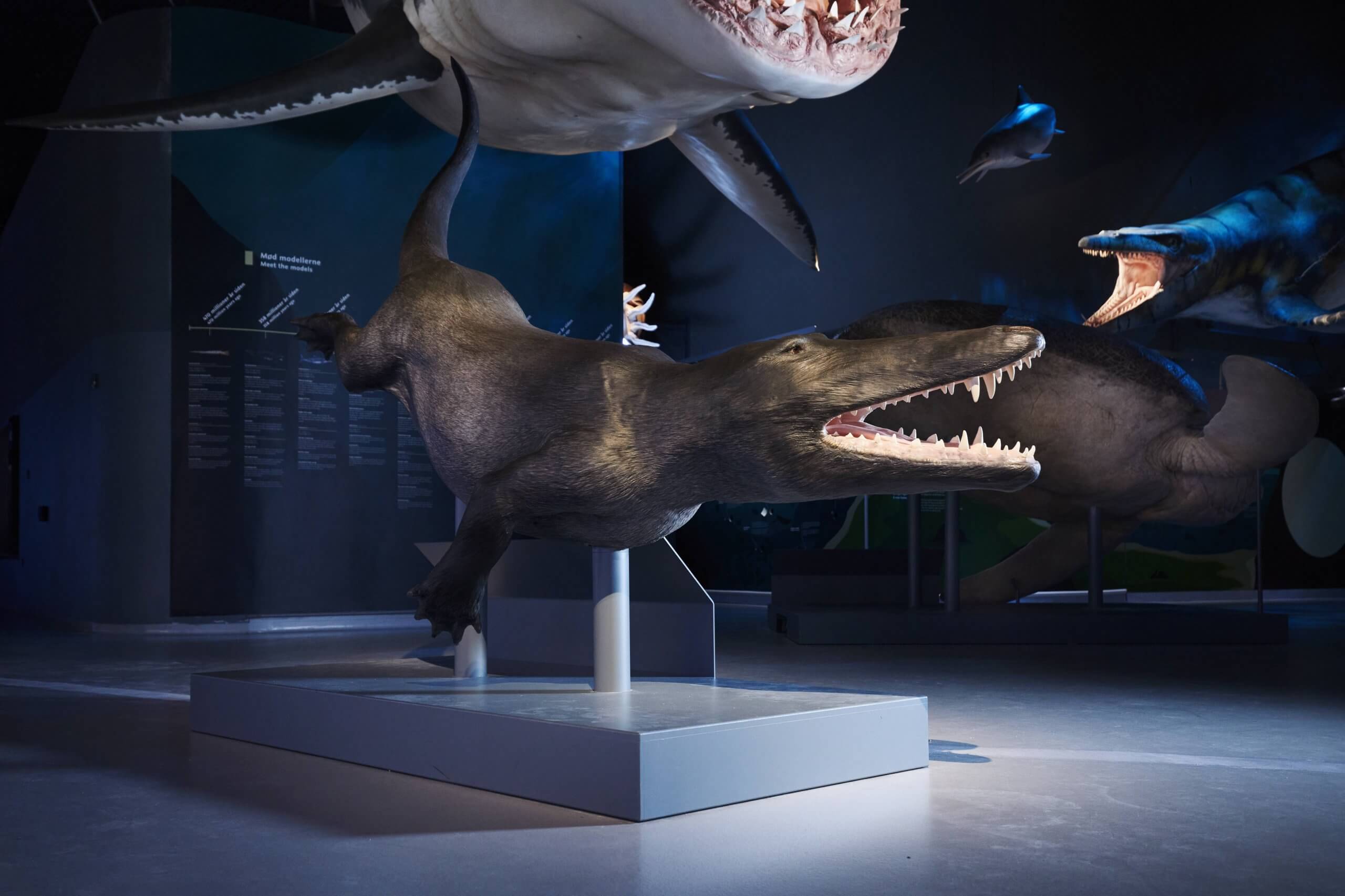
Ambulocetus, The Walking Whale
48 million years ago
Max length 3 m
Length of model 3 m
Ambulocetus means ”walking whale”, and is the prehistoric forefathers of the whales we know today. Whales still have the remnants of their ancestor’s legs, which have now become flippers. Ambulocetus lived most of its life in water. It wasn’t very good at walking on land and used its legs, both to swim and to walk on the bottom, much like modern-day hippos.
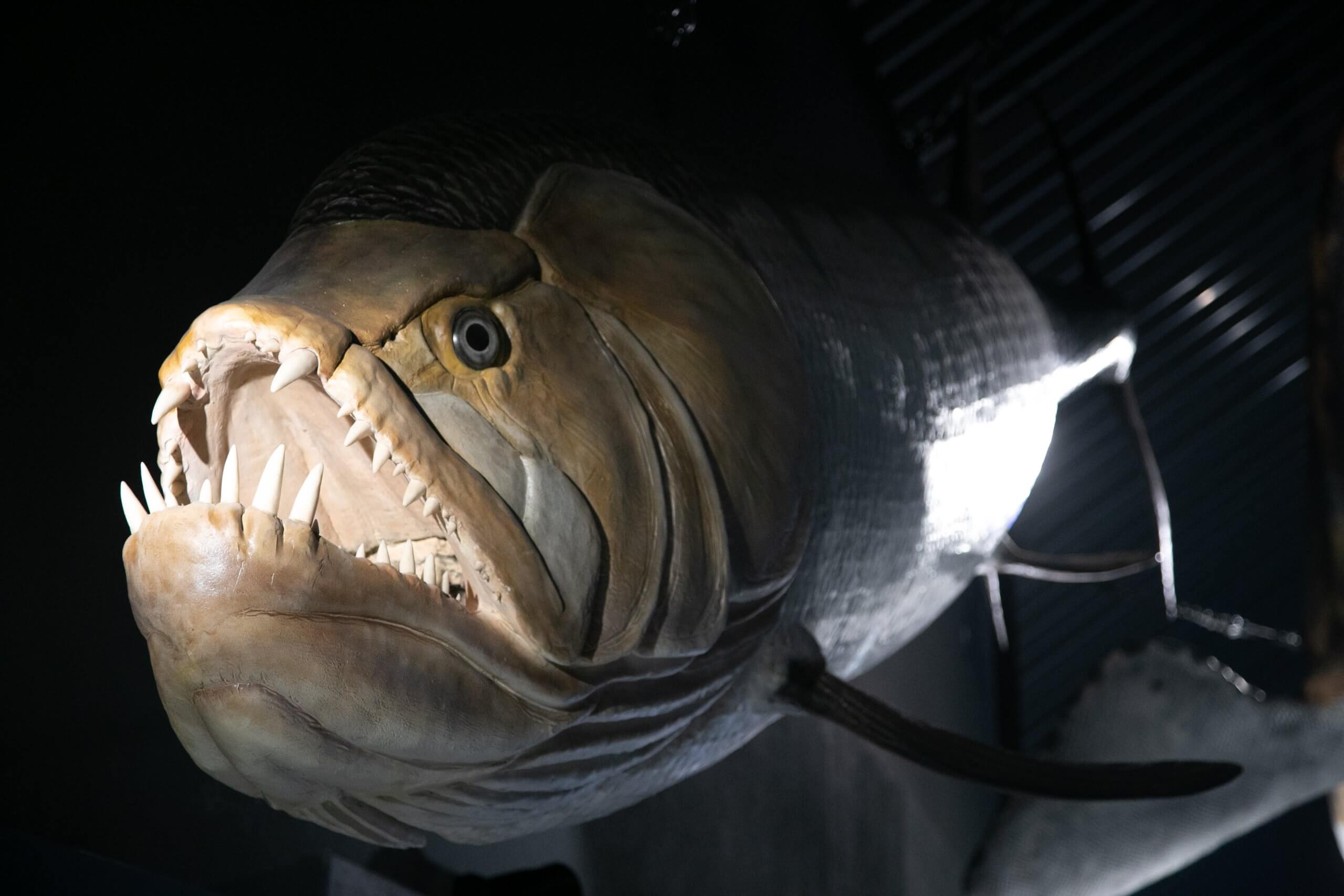
Xiphactinus, The Sword Ray
90 million years ago
Max length 6 m
Length of model 6 m
The xiphactinus was the largest bony fish of the cretaceous period. It was a fast swimmer, with an upturned mouth that helped it catch its prey, which would be anything from fish to seagulls. The xiphactinus preferred to swallow its prey whole, but could also hold on to it with its long teeth first, and then swallow it. A xiphactinus that measured 4 meters, could swallow a 2-meter-long fish, whole!
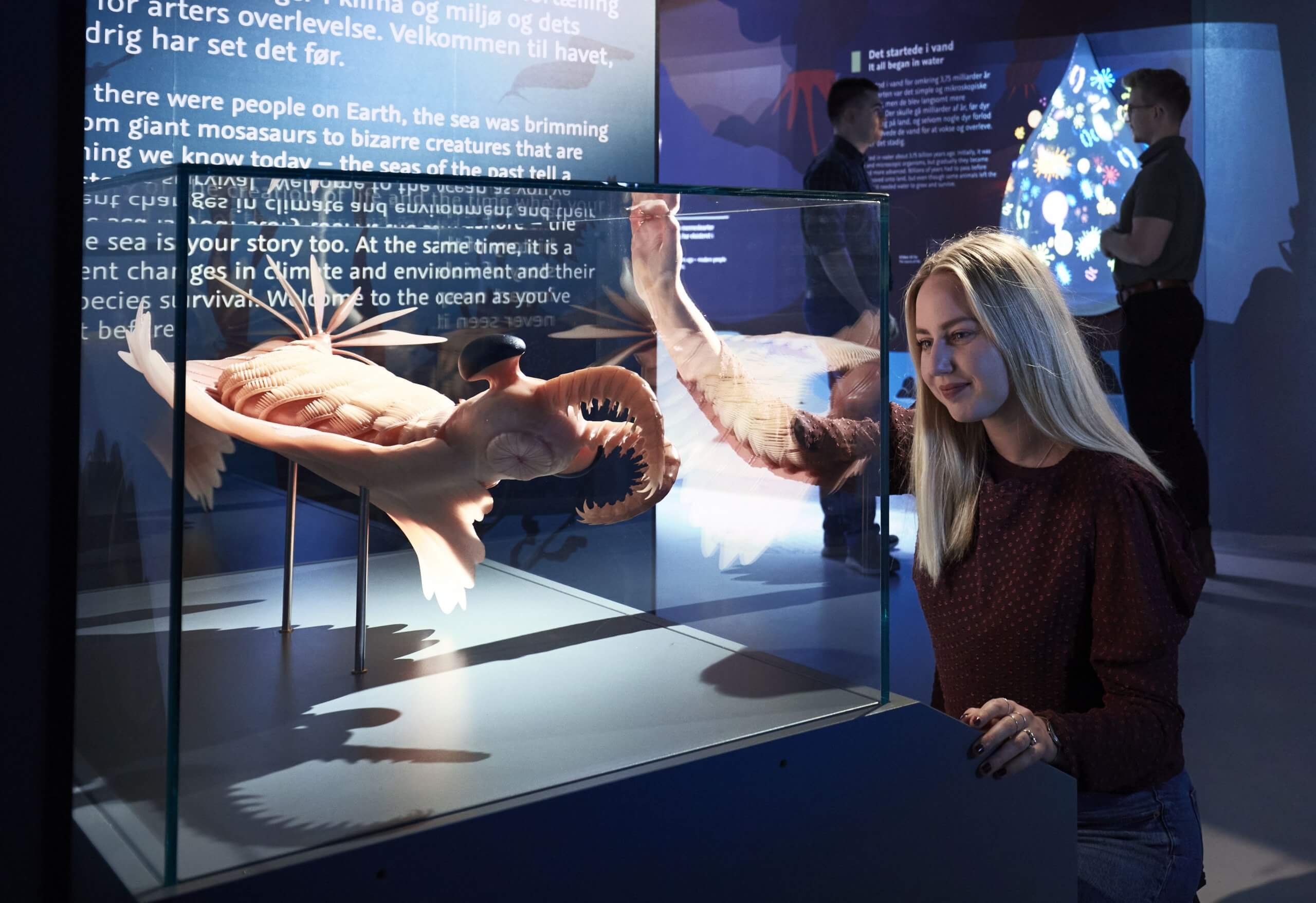
Anomalocaris, The Sea Millipede
505 million years ago
Max length 1 meter
Length of model 1 meter
The Anomalocaris is probably one of the earth’s first large predators. It had excellent eyesight and could catch its prey, using two spikey front arms that sat under its head. It is presumed to be an effective and quick swimmer, using its tail to navigate quickly when chasing its prey.
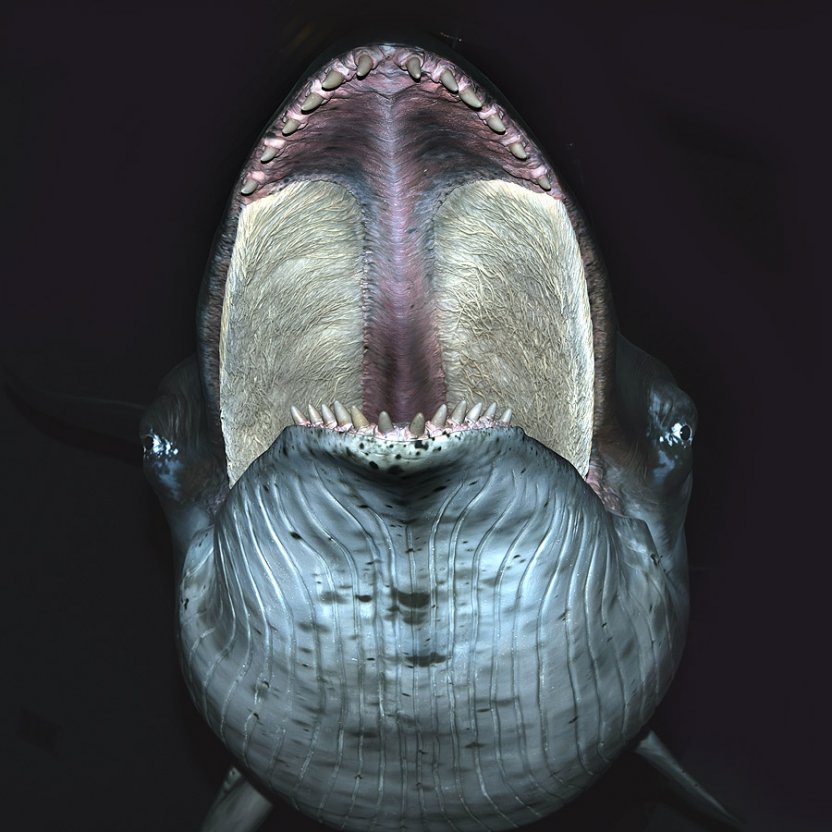
The toothed baleen whale waharoa
30 million years ago
Max. length: 6 m
Length of the model: 6 m
There exist two types of whales – those with teeth and those who has baleens. Baleens are long thin plates, in rows. They act as a strainer that the whale pushes water through to filter out krill. Waharoa both had teeth and baleens but probably only used the baleens. It has been unclear when the baleens of whales have arisen but the finding of waharoa tells us that they arose whilst the teeth slowly disappeared and that waharoa might be the ancestor of all now living baleen whales – including the blue whale.

Ichtyosaurus, The Fish Lizard
180 million years ago
Max length 4 m
Length of the model 1.5 m
Look closely at the ichthyosaurus – what animal do you think it resembles most? If you’re thinking of a dolphin, you wouldn’t be the first. However, the ichthyosaur is actually a reptile and had this body shape many millions of years before whales even existed. Just like the dolphins and tuna fish we know today, the ichthyosaur’s body was built to swim quickly through the water. It is presumed to have lived off of squid and smaller fish.

